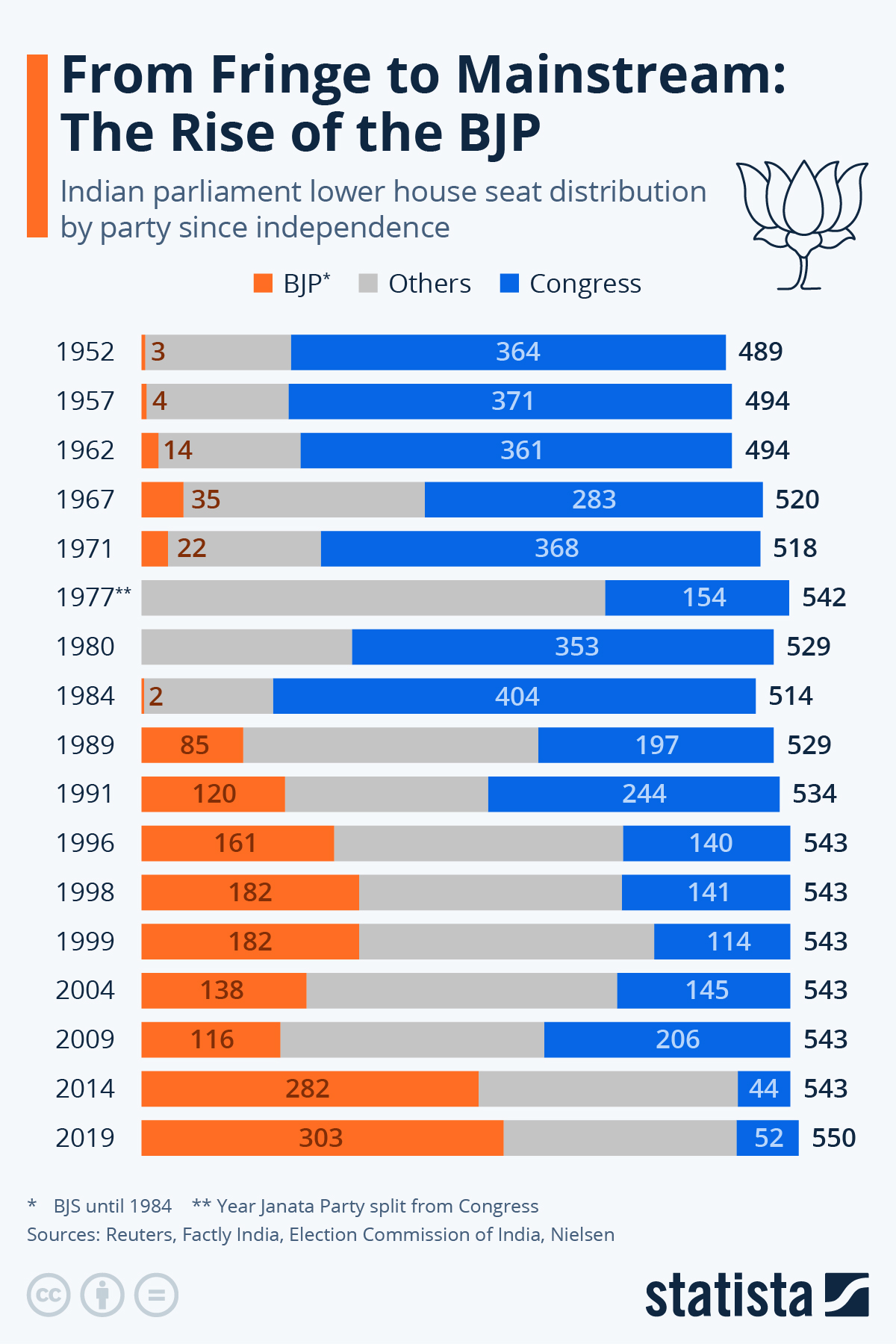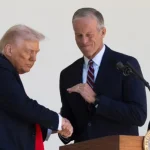
Voters in India are getting set to head to the polls in what has been dubbed the world’s biggest election.
Nearly 1 billion people are eligible to vote and to determine whether 73-year-old Narendra Modi, leader of the Bharatiya Janata Party (BJP), will rule the nation for a third consecutive term.
The elections kicked off yesterday (Friday) and will be carried out in seven phases due to the sheer size of the country, ending June 4.
As Statista's Anna Fleck shows in the following chart, the BJP-led National Democratic Alliance alliance won 303 out of 550 parliamentary seats in India’s Lok Sabha general elections in 2019 and 282 out of 543 parliamentary seats five years before. In this year’s elections, the NDC is projected to win as many as 399 seats.
You will find more infographics at Statista
Opposition parties have banded together, led by the Indian National Congress party (INC), to form a 26-member alliance, named the Indian National Developmental Inclusive Alliance (INDIA) in an attempt to stop this from happening.
Critics decry the BJP as Hindu nationalists and fear that India will become further divided, accusing the incumbent government of having enabled the persecution of minorities, particularly Muslims, under their rule. Supporters meanwhile praise Modi for securing India’s place as a major global economic power.
The rise of the BJP as India’s majority party was an unlikely one.
Its predecessor, the right-wing Bharatiya Jana Sangh (BJS) party, gained only marginal support and joined the Janata Party (People’s Party), which won the 1977 elections as a catch-all union opposing the declaration of a state of emergency in the country.
After the Janata Party dissolved in 1980, the party was recreated as the BJP and started from the bottom again, gaining followers emphasizing Hindu national pride and hardline politics.
Voters in India are getting set to head to the polls in what has been dubbed the world’s biggest election.
Nearly 1 billion people are eligible to vote and to determine whether 73-year-old Narendra Modi, leader of the Bharatiya Janata Party (BJP), will rule the nation for a third consecutive term.
The elections kicked off yesterday (Friday) and will be carried out in seven phases due to the sheer size of the country, ending June 4.
As Statista’s Anna Fleck shows in the following chart, the BJP-led National Democratic Alliance alliance won 303 out of 550 parliamentary seats in India’s Lok Sabha general elections in 2019 and 282 out of 543 parliamentary seats five years before. In this year’s elections, the NDC is projected to win as many as 399 seats.
You will find more infographics at Statista
Opposition parties have banded together, led by the Indian National Congress party (INC), to form a 26-member alliance, named the Indian National Developmental Inclusive Alliance (INDIA) in an attempt to stop this from happening.
Critics decry the BJP as Hindu nationalists and fear that India will become further divided, accusing the incumbent government of having enabled the persecution of minorities, particularly Muslims, under their rule. Supporters meanwhile praise Modi for securing India’s place as a major global economic power.
The rise of the BJP as India’s majority party was an unlikely one.
Its predecessor, the right-wing Bharatiya Jana Sangh (BJS) party, gained only marginal support and joined the Janata Party (People’s Party), which won the 1977 elections as a catch-all union opposing the declaration of a state of emergency in the country.
After the Janata Party dissolved in 1980, the party was recreated as the BJP and started from the bottom again, gaining followers emphasizing Hindu national pride and hardline politics.
Loading…






